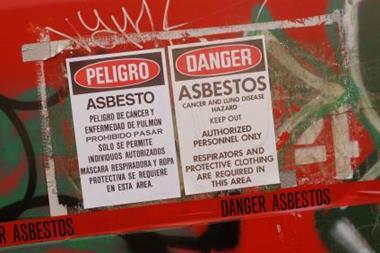More legal views on the landmark trigger ruling
Medical evidence that was accepted in the employers’ liability trigger litigation last month has cast further doubt on mesothelioma claimants’ ability to recover damages in public liability cases.
That evidence could halve the generally accepted period between the occurrence of injury to a claimant and the disease manifesting itself. This would reduce the likelihood of the employer being in business and on risk with a public liability policy.
From the perspective of public liability claims, these are dealt with on an injury occurrence basis. It has been the practice to take the period between the mutation of cancer cells and development of symptoms attributable to the tumour at 10 years. It has been assumed that the injury occurs at the time of mutation, namely 10 years before symptoms develop, and that date is the effective one for the purpose of public liability insurance.
However, a detailed review of medical and epidemiological evidence in the employer’s liability trigger litigation revealed that after the initial mutation, the body’s defence mechanisms are still working to attack the tumour.
It was accepted by Mr Justice Burton that it was not until five years before the date of onset of symptoms that the injury becomes irreversible, through a process termed angiogenesis, when the tumour acquires its own vascular system. As a result, that should be the date taken for the occurrence of injury.
The reduction of the period to five years has significant potential ramifications for public liability claimants and insurers. If a company ceases trading, it will no longer have effective public liability insurance.
These companies go out of business all the time. If you shorten the period between the “occurrence” of the injury and the disease manifesting itself, you are effectively lengthening the period from the date of exposure in which a company has the opportunity to go out of business, and for there not to be effective public liability cover in place.
Postscript
David Dunne is a partner and a member of the industrial disease team at law firm Hill Dickinson
Hosted by comedian and actor Tom Allen, 34 Gold, 23 Silver and 22 Bronze awards were handed out across an amazing 34 categories recognising brilliance and innovation right across the breadth of UK general insurance.












































